Many people migrate to Arizona because of its pleasant year-round climate, particularly considering the average number of sunny days each month. As Arizona is a low desert location, the temperature can occasionally reach 104 to 107 degrees Fahrenheit, which is not optimal for most types of vegetables. Nevertheless, this does not imply that gardening in the scorching heat of an Arizona summer is impossible, which is why you have come to our website.
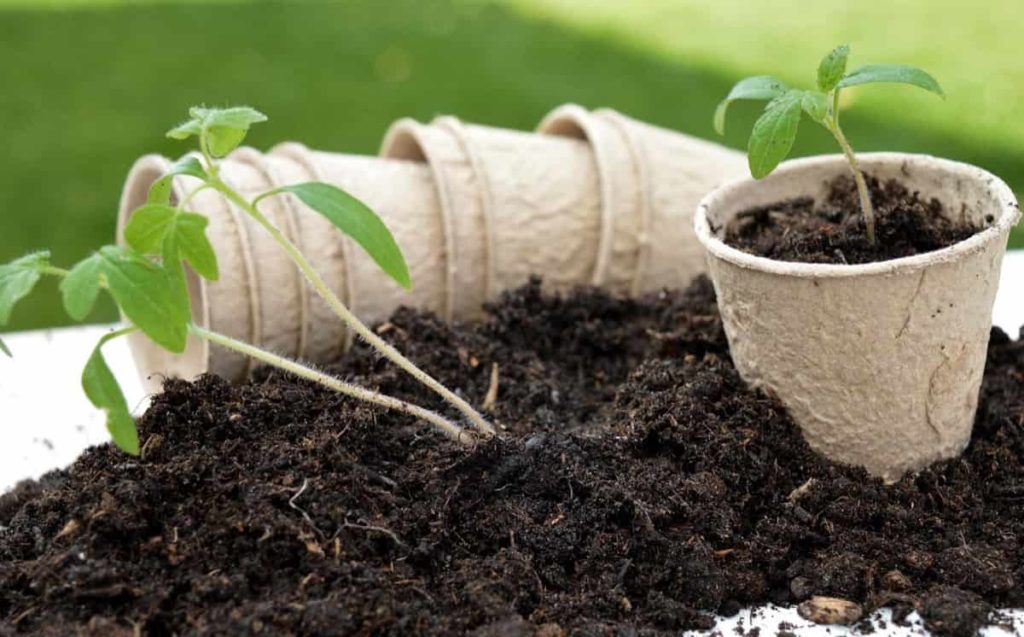
Below we will learn home gardening in Arizona, how to set up a backyard home garden in Arizona, USDA hardiness zones of Arizona, how to set up an indoor home garden in Arizona, how to set up a container garden in Arizona, different fruits, vegetables, and flowers to grow in Arizona.
Home gardening in Arizona
Is Arizona a good place to garden?
The primary challenge of gardening in Arizona is not lack of sunlight but how to make the most of the available hours. The sun’s rays can be harsher and more intense when they come from the west, while the sun’s rays from the east are often the most beneficial. Fewer alternatives for space and light might make this task more challenging in apartment complexes. However, it does not exclude the potential of growing anything; it means that gardeners will need to know which plants perform best under their specific lighting conditions to succeed.
The selection of plants is, for many individuals, the most exciting aspect of the process. In the state of Arizona, certain plant species thrive more than others. Checking the maturity date on the back of a seed packet will tell you how long it will be from the time of planting until the crop is ready to be harvested. This date might range anywhere from 30 to 150 days. Additionally, planting distance recommendations should be included on seed packets. One vegetable that reaches maturity rapidly is kale.
When should I start a home garden in Arizona?
Although gardening in Arizona has unique challenges, it is not impossible. Our seasons are distinct from those of most other places. The zone maps are often seen on the back of seed packages, and other zones are typically ineffective in this area. We have three separate planting seasons, each of which is much shorter than the previous one. The growing season for cool-season crops often lasts from about September to March, whereas the growing season for warm-season crops typically lasts from about February to May.
Monsoon planting typically starts in July or August, when the rain and humidity levels peak. To remove the uncertainty from knowing when to plant in the low desert’s varying seasons, consult a planting guide based on local research. The probability of success can be improved by selecting the appropriate crop and planting it at the appropriate time.
What are the USDA hardiness zones of Arizona?
The USDA Hardiness Zone Map (2012) divides the United States into zones based on average annual low temperatures. Every zone represents a difference of 10 degrees Fahrenheit. Hence the scale runs from 1 to 13. Each zone has been further broken into “a” and “b” subzones at 5-degree intervals to provide further granularity. Temperatures may drop to minus 60 degrees Fahrenheit in zone 1, while in zone 13, they can reach into the mid-50s and low-60s in the subtropics and tropics.
Zones 4b through 10b are all included on Arizona’s USDA Hardiness Map. Temperatures in zone 4b range from -20 to -25 degrees Fahrenheit, which is experienced in the White Mountains, San Francisco Peaks, and Mount Graham. In Flagstaff, Arizona’s zone 6a, plants must endure -10 to -5 degrees Fahrenheit. Temperatures in zone 10 are highest in southwestern and central Arizona. This is notably true in the Phoenix urban area and the Colorado River, where the coldest temperatures average approximately 30°F.
How to choose the ideal location for an outdoor/backyard garden in Arizona??
Plants grown in your yard or house can reduce your carbon footprint and be healthy for the environment—methods for growing plants at home, from a single pot on a balcony to an extensive garden. If possible, locate your garden near your house. What you plant in your garden this year will depend on how much time, space, and food your family and neighbors need to thrive. Create a printout by drawing the desired area to scale on a grid sheet of paper.
Direct sunshine is the ideal growing environment for all plant species. Root and leaf crops fare very well in the shade. For many plants, propagation issues caused by a lack of sunshine are made worse. Keep small plants from smothered by taller ones by positioning trellises and such on the north side of the garden. Be careful to water your garden regularly. The ideal soil conditions are a flat, well-drained surface.
In case you missed it: New York Container Gardening: Guide for Vegetables, Herbs, Flowers, and Fruits at Home
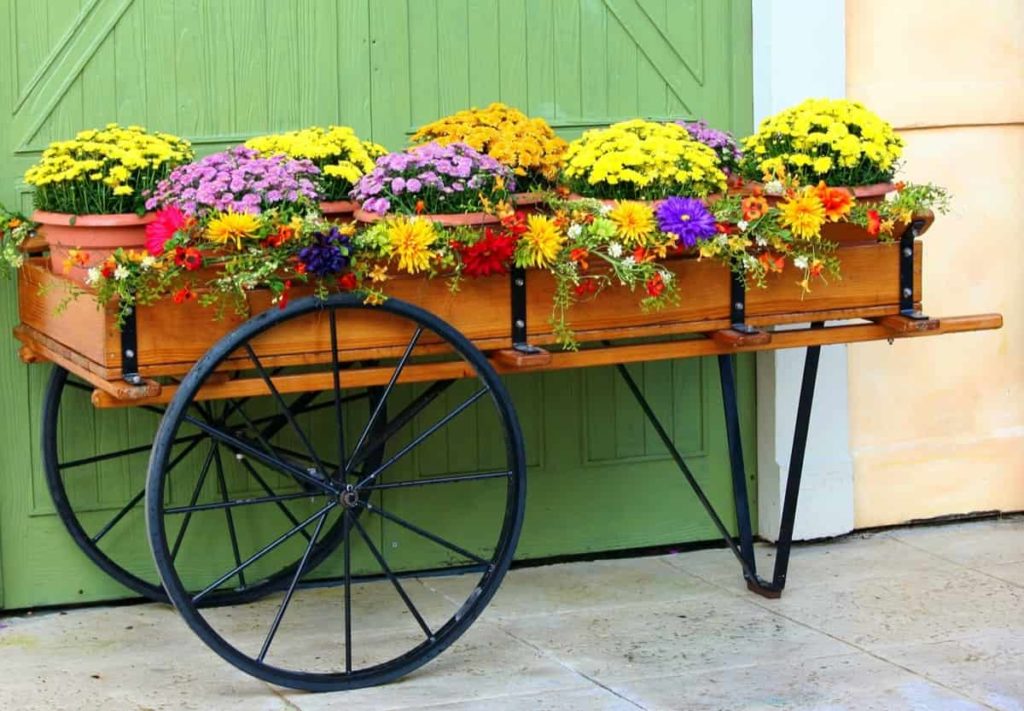
Soil quality and crop yields benefit from adding compost or other organic resources. A good rule of thumb is to use the mature leaf size of the plants to measure the space between them. Most plants may be grown in a wide variety of environments. Once the first harvest has been gathered, it’s time to plant again.
How to prepare the soil in the backyard or for any outdoor garden?
To prepare your soil for loosening, clear the area of any grass or sod first. Then, use a powered tiller or cultivator to get rid of the dirt fast. Daily equipment rentals are available at several local hardware and garden stores. Wear gardening gloves to protect your hands from the soil and vegetation. Grab a handful of soil in your palms and squeeze. The soil should roll into a ball if you squeeze it very hard. You know you’re dealing with clay when the soil rolls into a ball.
When the soil is excessively sandy, it’s impossible to form a ball. Gardeners should conduct soil tests in several different spots throughout their plots since soil composition might vary. Three weeks before planting, the soil should be cultivated. Plants thrive after the soil has absorbed nutrients. Before planting, turn the soil so topsoil is on the bottom. Making uniform clods of soil can help your plants establish deep roots. Plant in the autumn or winter in Arizona if you can, but first work to amend the soil.
Get out your spade and shovel and reduce the gypsum to powder. Look for gypsum at any of your local home and garden stores. Sandy soils should only be loosened using gypsum. Adding 10 centimeters of compost to sandy soil effectively enhances the soil’s pH. Manure or compost, which has a pH-lowering effect, may be used to replenish the soil’s nutrient supply. Compost may improve soil drainage and sustain plant health when used regularly. Compacted compost can be worked into the soil using a shovel.
The additional two inches will bring you two inches farther. Compost can be found at garden centers and hardware shops, but it can also be made at home. Including animal by-products or carcasses in your compost pile might harm your veggie garden. Add fertilizer to the soil so it can grow plants. NPK fertilizer is a fantastic method for providing all three essential nutrients to your plants. A 100-square-foot area requires 1 pound of 10-10-10 fertilizer. Put the fertilizer on the ground before you put the seeds in. High levels of fertilizer in the soil might be harmful to your plants.
How to plant a backyard garden or outdoor garden in Arizona?
There are a variety of soil mixtures designed for beginning seeds that can be purchased at garden stores, as well as flats and pots designed specifically for seedlings. Seeds and seedlings can decay if they are not provided with sufficient water. Purchasing young plants can make the task of planting your garden much less difficult. To get the bed ready, follow the tag and drill hole directions while keeping the specified parameters in mind.
When removing plants from the container, begin at the bottom and work your way up. Compost or manure can be added to soil that requires additional amendments. This condition is referred to as being “root-bound.” To begin, loosen the soil around the roots and saturate the area with water.
How to water an outdoor or backyard garden in Arizona?
Water early in the morning. This prevents leaf drying after sunset, which aids in disease prevention. Fungal diseases flourish around 70 to 80 degrees Fahrenheit and can increase in two to four hours in warm, moist circumstances. If you overwater your plants, they might die. Give the soil a good soaking until a shovel can be used to dig easily. Water lost due to leaks is also money that can be used elsewhere. Putting plants in deep bowls to water them is a great way to ensure the liquid reaches its roots.
By watering the soil appropriately, runoff may be reduced. Sprinklers should not be utilized for spraying to prevent runoff and water loss. Drip watering systems allow water to be delivered to a plant’s root zone steadily and gradually, ensuring that the plant uses almost all of the water provided. Drip water systems should use low-priced cartridge-type filters to purify the water supply and eliminate any minuscule particles or salts. Drip watering systems can take many forms, from plain tubing to complex self-purifying emitters.
In case you missed it: Top 25 Vegetables to Grow on Raised Beds
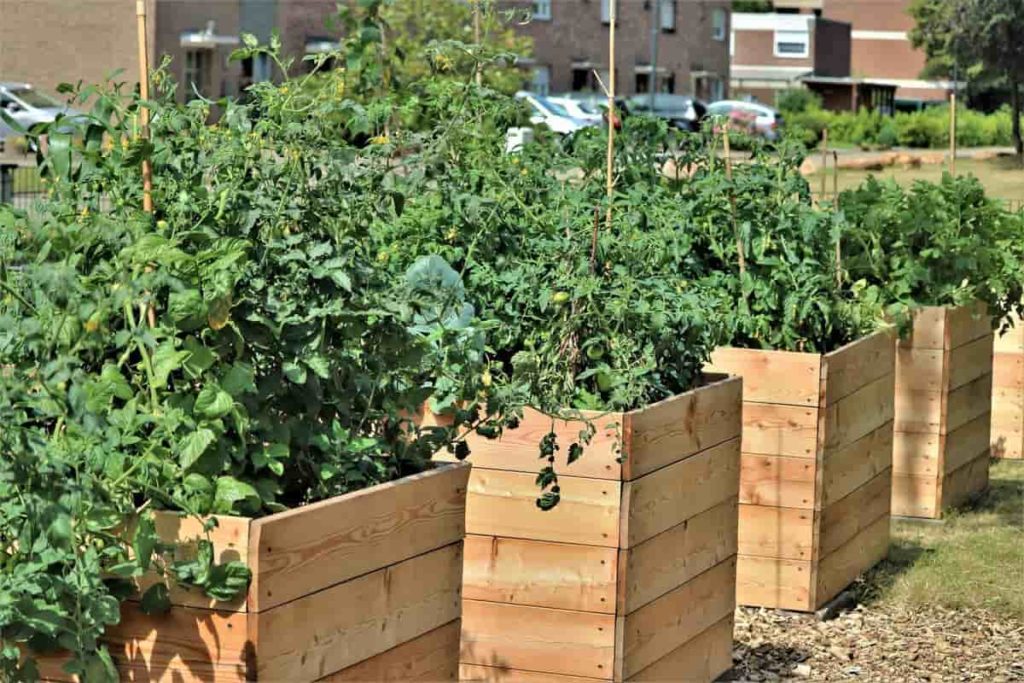
Sandy, loamy, and clay soil are the three main soil types. Clay absorbs liquid at a rate proportional to its density. Therefore a single inch of water can hold a wide range of volumes. Soil can range in texture from sand to loam to clay. Large plants like tobacco can send roots down as far as three feet. Clay soil is compact to withstand intense watering for up to three days.
If you water your garden, be sure not to walk on the soil for a while so that the pores don’t get clogged with water and suffocate the roots. Plant leaves are kept clean with weekly overhead watering, but the water is never allowed to touch the ground around the plants. Drip watering cans made from recycled plastic bottles are a great resource. It is recommended to cut the plant in half before burying it, provide it with water and fertilizer, and then prune the top.
How to protect your backyard or outdoor garden from pests and diseases in Arizona?
If you must kill insects, try using a speed water pipe instead of pesticides. If the present strategy doesn’t work, you can try using pesticides with a more targeted mode of action. Without intervening steps, the “one-spray kills all” method will be ineffective against beneficial and harmful insects. It is recommended that, where possible, less harmful insecticides be used initially.
There is little concern that these herbicides can cause damage to wildlife that isn’t the intended target. Always read the label to determine whether the product is registered for the problem you’re trying to solve, whether it’s an insect or plant. Insecticidal soaps are effective against aphids, whiteflies, mites, and aphid eggs; they come in convenient spray bottles and may need repeat applications in some instances.
Whiteflies, mealybugs, psyllids, spider mites, scale insects, lace bugs, aphids, spider mites, and thrips are only some of the insects that may be killed with insecticidal oils. A substantial amount of greenery is required. To avoid further damage to your plants, do not use this solution if they are already experiencing water stress.
How to choose ideal containers for indoor gardening or container gardening in Arizona?
A bigger container can hold more water, allowing you to space out watering. Large plants in small containers need more frequent watering and feeding throughout the year’s warmer months. Pick a container with drainage holes suited to your gardening technique and setting. Even if you give your plants all they need, Mother Nature ultimately decides how much water they will need. Roots of sensitive plants can be injured by prolonged exposure to direct sunlight in black or metal containers.
Traditional terra cotta containers have been widely used for decades. This material is lighter in weight and more attractive than many others, and dries quickly. While glazed vessels are beautiful to look at, they can be expensive and inconvenient to move. Plastic pots are more affordable and available in a greater variety of styles than clay ones. A second choice is the sturdy half-whiskey barrel. If the bottom of the planter doesn’t already have drainage holes, you should drill some.
How do you prepare the soil for a container garden in Arizona?
The lightness and drainage of soil can be maintained by adding sand, vermiculite, or perlite. Adding peat to soil improves its capacity to store moisture. Healthy plant growth depends on a soil composition that strikes a happy medium between drainage and water retention. Garden soil can be reused, but it won’t benefit your plants if it has a lot of nutrients. You can also have to contend with weeds. If you want the greatest results, you should use bagged soil or a soilless mix designed for pots.
Every year, you should give your plants fresh soil to help keep them healthy and free of pests and diseases. Additives that soak up water and slowly release it into the soil are sometimes used in blends. This is excellent if you have a hectic schedule and are worried about forgetting to water your plants. When planting, provide about two inches of headspace so the container can absorb excess water. Roots need air and space to grow, and neither will be provided if the soil is compacted too tightly around the plants.
How deep does a container garden need to be?
The roots of plants are similar to fingers that extend down into the soil. They are always on the lookout for sources of water and nutrients. They won’t have the opportunity to develop to their full potential if they can’t get their hands on these things. The topsoil must be of sufficient depth to allow the roots to continue growing in any given direction. The more deeply the root system develops, the more nutrients it can extract from the soil around it.
This indicates that to achieve healthy development, you must ensure a sufficient place for the roots to stretch out and flourish. A container garden needs to have enough depth so the plant’s roots can have enough room to flourish. Vegetables with leaves can be grown successfully in 6-8 inches deep pots. The depth of the container must be between 8 and 14 inches for root crops. Fruiting veggies can grow in pots 12-16 inches deep.
In case you missed it: San Francisco Backyard Gardening: How to Start with Vegetables, Flowers, Fruits, and Herbs at Home in California
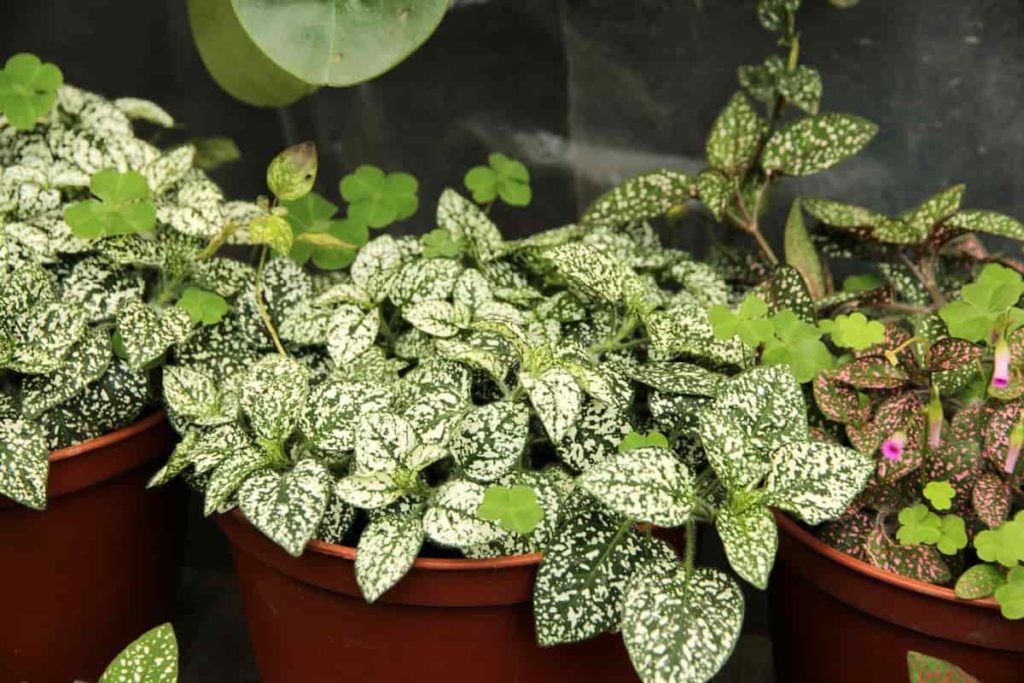
What garden plants do well in containers in Arizona?
Pick plants that have similar growing needs to maximize your success. For example, cultivars that do well when exposed to direct sunlight need to be grouped. You need to start with high-quality plants to get the best results. Poor-quality plants hardly recover in Arizona’s growing season. Growers in greenhouses put in a lot of work to cultivate plants that are hardy enough to live in our climate conditions.
When picking a transplant, it is essential to examine the roots to confirm that most of the roots are growing and extending. White describes the color of healthy, active roots, whereas dark or even almost black describes the color of aging roots. Using only plants with leaves and providing texture with perennials, grasses, and other kinds of plants is becoming more popular in landscaping. Recent years have seen a rise in the practice, prevalent among homeowners, of beginning the planting of perennials in the containers they will later place in their yards.
When growing plants in the ground, it might be challenging to accommodate the demands of different species, especially if they have specific requirements such as shade or water. To that end, take care not to mix plants that need varying amounts of light or moisture in the same container. If you pay attention to each plant’s circumstances, you can grow various plants in containers.
The seemingly endless possibilities for filling a container might be overwhelming, but the thrilller, filler, and spiller rule can help you find your way. Using both, you can make containers that seem like an expert made. Feature plants, such as tall grasses and strong blooms, in the pot’s center, if seen from all sides, or in the rear, if just a few sides will be seen. Cosmos, Gomphrena, and Salvia are some of Arizona’s greatest summer container flowers.
Space fillers are used to complete a design. These blooming plants of medium height should be positioned between the thrillers and the container’s rim. Marigolds, vincas, and zinnias are just a few examples. Fillers made from herbs like mint are hardy enough to withstand the Arizona summers. Low-growing spillers cascade over the sides of the container. Put them at the container’s rims. You may plant Calibrachoa, English Ivy, String of Pearls, or Portulaca as spillers.
How to plant and water container plants in Arizona?
The bottom of tall pots can be filled with lightweight materials such as broken terra cotta pot pieces to support plants with shallow roots. Soggy soil can be avoided and drainage enhanced. Start with the largest pot and work your way out, scraping and filling as needed, until each plant’s soil is 1 to 2 inches below the lip of the container. Container plants will need more regular watering than the rest of your garden.
This unquestionably requires consistent watering, particularly in hot, dry climates. You should see water exiting via the drainage holes with each consecutive watering. It’s best to stop before the ground becomes soggy or the water stands still, but doing so ensures you’ll consume a lot of liquid. If you can’t guarantee that you’ll remember to water your plants daily, self-watering pots are a must-have. The reservoir at the bottom of these pots can store water, so your plants won’t dry out for days.
In case you missed it: How to Prepare Soil for Okra Plants: Best Soil Mix, pH, Compost, and Recipe
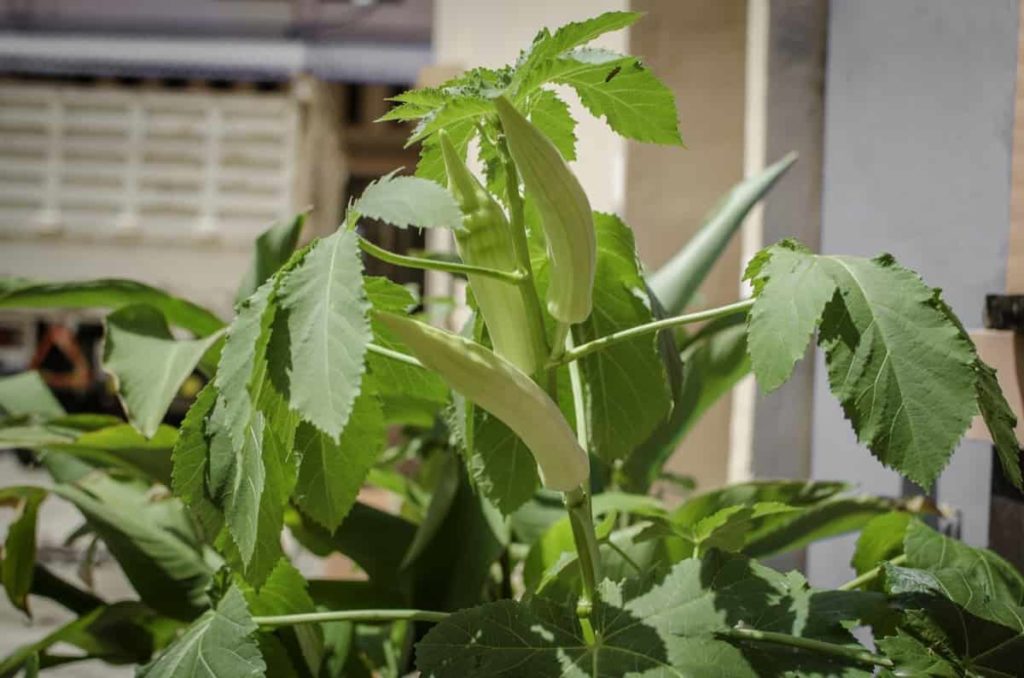
How to fertilize container plants in Arizona?
To some extent, the soil in a potted plant will lose nutrients with every watering. For this reason, it requires frequent fertilization. While slow-release, all-purpose fertilizer beads are generally safe for most plants, it’s still a good idea to double-check the tags just in case. Regarding fertilizing container plants, there are no set-in-stone guidelines to stick to. How much and how often to apply fertilizer depends on the plants’ development stage, fertilizer, and watering technique.
Can you have an indoor garden year-round?
Growing veggies indoors is possible at any time of the year. Most food plants grown outside will also do well in a greenhouse or indoor environment. Most vegetables are grown inside, often in a greenhouse. However, most of us lack access to a greenhouse; thus, we must figure out other methods for effectively growing our crops. If you want a flourishing garden, there are several rules you should follow.
Keep reading, and we’ll address any other concerns you may have about indoor gardening. Indoor vegetable plants need light to thrive. The number of daylight hours varies with the seasons, making it complicated. In the winter, even the brightest part of your house will experience less daylight than usual. Vegetables need at least 14 hours of light every day.
How to grow indoor gardens in Arizona?
Consider hydroponics for indoor gardens. Much research is being conducted on hydroponic methods of raising food on a commercial scale. No soil is used in hydroponic cultivation; plants are grown in a nutrient-rich water solution that substitutes for soil. A home gardener can grow plants in this manner, even though the associated costs are often higher than those associated with more conventional approaches. In addition, you will need to understand the nutrients plants need at various phases of their development and how to deliver those nutrients.
What fruits and vegetables grow well in Arizona?
Onions, cucumbers, eggplants, melons, peppers, lemons, limes, pumpkins, squash, peas, green beans, radishes, tomatoes, herbs, sweet corn, sweet potatoes, mandarins, grapefruit, oranges, and tomatoes are all examples of crops that thrive during the warm season. However, these veggies are sensitive to frost and need mild temperatures to set fruit and grow to their full potential successfully.
How deep should raised beds be for vegetables?
It is not required to make a raised bed very deep to perform its function. In most circumstances, a distance of eight to ten inches is enough. The bed may need to be raised and filled with a porous growth medium if there is any problem with drainage or if the plants you are growing thrive in drier soil. The depth of vegetable beds should ideally be anywhere between 12 to 16 inches.
What flowers bloom all summer in pots in Arizona?
Flowers such as Tuberous Begonias, Impatiens, New Guinea Impatiens, Petunias, Geraniums, Marigolds, Calibrachoas, and Zinnias may grow year-round in Arizona.
In case you missed it: How to Grow Berries in USA: At Home in Pots, Containers, Indoors, and Tips

Conclusion
Growing vegetables in Arizona can be difficult. When growing in the desert of Arizona, it’s important to remember that not all gardening principles, seed-packet timing recommendations, or general zone requirements will be applicable. A prosperous vegetable garden can be established in Arizona with the help of the above instructions.
It’s crucial, however, to recognize that Arizona’s environment for gardening is special, with its own set of advantages and disadvantages. If you live in Arizona state of the USA and plan to set up a home garden, balcony garden, terrace garden, or indoor garden, this article might be helpful to reach your goals.
| Phoenix | Maricopa | Eloy |
| Tucson | Marana | Flowing Wells |
| Mesa | Prescott | New River |
| Chandler | Oro Valley | Somerton |
| Scottsdale | Sierra Vista | Douglas |
| Glendale | Prescott | Sierra Vista Southeast |
| Gilbert | Apache Junction | Fort Mohave |
| Tempe | Bullhead City | Payson |
| Peoria | Sun City | Tanque Verde |
| Surprise | El Mirage | Sun Lakes |
| San Tan Valley | San Luis | Paradise Valley |
| Yuma | Drexel Heights | Vail |
| Avondale | Sahuarita | Coolidge |
| Goodyear | Kingman | New Kingman-Butler |
| Buckeye | Fortuna Foothills | Verde Village |
| Flagstaff | Florence | Saddlebrooke |
| Casas Adobes | Sun City West | Cottonwood city |
| Casa Grande | Fountain Hills | Valencia West |
| Lake Havasu City | Anthem | Tucson Estates |
| Queen Creek | Green Valley | Gold Canyon |
| Catalina Foothills | Nogales | Tucson Mountains |
| Rio Rico |
- How to Grow Hibiscus from Flower
- Plantation Ideas for Home Decoration: A Beginners Guide
- Flower Garden Designs and Layouts for Beginners
- Planting and Spacing Techniques in Papaya: A Beginner’s Guide
- Growing Gold: Essential Techniques for Planting Pineapples
- How to Make Kalanchoe Plant Bushy: Home Remedies and Solutions
- 11 Reasons Why Your Gardenia is Not Blooming: Home Remedies and Solutions
- Eco Elegance: The Guide to Designing a Drought-Tolerant Landscape
- Gardening on a Slope: Strategies for Hillside Landscaping
- Nourish and Flourish: Top Organic Mulches for Thriving House Plants
- Everything You Want to Know about Indian Mogra Flower: Discover Uses and Growing
- Green Thumb Success: Expert Tips for Cultivating Greenhouse Pumpkins All Year Round
- Maximize Growth & Flavor: The Ultimate Guide to Companion Planting in Herb Gardens
- How to Control Rhododendron Problems Naturally: Home Remedies and Organic Ways to Fix Them
- Natural Magic: The Remarkable Benefits of Cinnamon for Plants
- Best Steps to Revive Dying Tulip with Natural and Organic Treatment
- 10 Reasons Why Your Angel Trumpet is Not Blooming: Remedies and Treatment
- How to Fix Periwinkle Leaf and Flower-Related Problems: Natural Remedies and Solutions
- How to Fix Zinnias Leaf and Flower Problems: Discover Natural and Home Remedies
- Organic Steps to Induce Lemon Tree Flowers: A Comprehensive Guide
- Bloom Booster: Crafting the Perfect Homemade Bougainvillea Fertilizer
- Optimizing Growth: A Guide to Applying NPK Fertilizer for Potted Plants
- 10 Best Homemade Fertilizers for Rubber Plant: DIY Recipes and Application Method
- How to Boost Female Pumpkin Flowers: Effective Steps for More Flowers and High Yields
- Transform Your Indoor Garden: Top Benefits of Pink Salt for Houseplants
- 10 Best Homemade Fertilizers for Peacock Plants (Calathea): Easy DIY Guide
- Unlock Blooms: 9 Reasons Why Your Potted Chrysanthemum is Not Blooming
- 8 Reasons Why Your Potted Hibiscus is Not Blooming: Fix it with Simple Solutions
- Unlock Blooms: 9 Key Reasons Your Potted Frangipani Won’t Flower
- 10 Reasons Why Is My Ice Plant Not Blooming: Remedies and Treatment
- 10 Reasons Why My Potted Hydrangea Not Blooming: Treatment and Remedies
- 10 Reasons Why is My Wisteria Not Blooming: Remedies and Treatment
- 10 Reasons Why is My Goldfish Plant Not Blooming: Remedies and Treatment
- Maximize Your Space: Ultimate Guide to Balcony Gardening with Grow Bags
- 10 Reasons Why Your Iris is Not Blooming: Remedies and Treatment
- 10 Reasons Why Your Anthurium Plant is Not Blooming: Treatment and Remedies